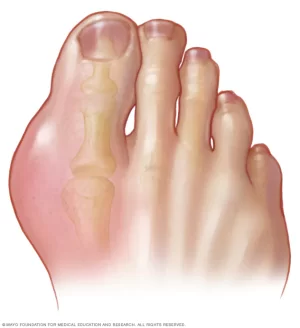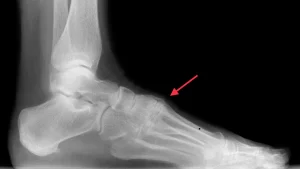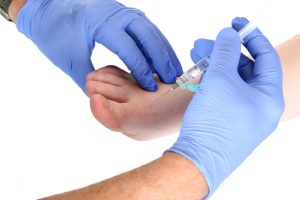
Gout is a type of arthritis caused by a buildup of uric acid crystals in the joints. It often affects the big toe joint, but can also occur in other joints in the foot and ankle. The symptoms of gout include sudden and intense pain, redness, swelling, and warmth in the affected joint.
Gout is typically managed with a combination of lifestyle changes and medications. Lifestyle changes may include a low-purine diet, limiting alcohol consumption, and staying hydrated. Medications may include non-steroidal anti-inflammatory drugs (NSAIDs) to relieve pain and reduce inflammation, colchicine to reduce inflammation and pain during gout attacks, and urate-lowering therapy to reduce the production of uric acid.
To prevent gout attacks, it is important to maintain a healthy weight, avoid foods high in purines (such as red meat, seafood, and alcohol), and stay hydrated. If you experience symptoms of gout, it is important to see a healthcare provider for an accurate diagnosis and appropriate treatment.






